Started Pullets: How to Get Eggs Sooner Without Raising Chicks
Curious about started pullets? Learn what they are, how to care for them, and why they’re a smart option for faster eggs without the hassle of chicks.
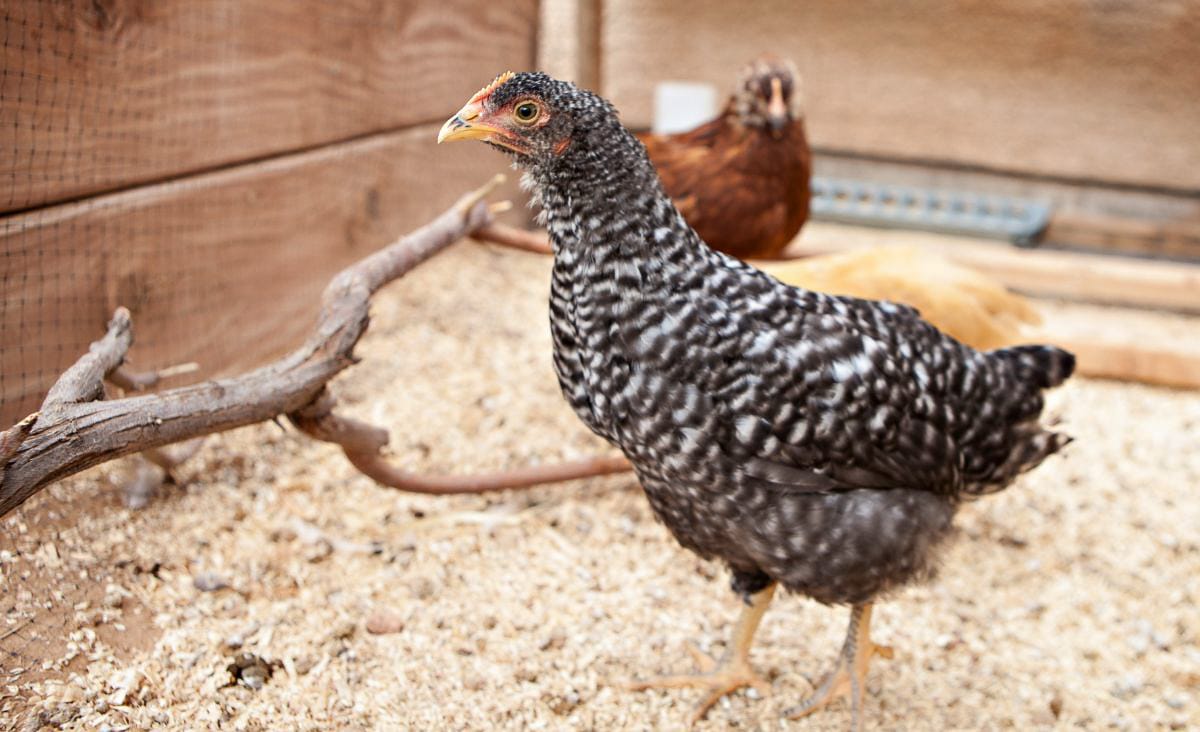
If you’ve been dreaming of farm-fresh eggs but don’t want to wait months for chicks to grow up, started pullets might be exactly what your flock needs. These teenage hens are just weeks away from laying, and for busy homesteaders—or anyone who doesn’t love the idea of a brooder in the living room—they’re a game-changer.
I raise chicks here on the homestead, but when it comes to adding to my own flock, I only buy started pullets. I’ve found it saves time, reduces stress, and gets me to that first egg faster. If you’re on the fence, I’ll walk you through exactly what they are, why they might be worth the investment, and what to expect when you bring them home.
What Is a Started Pullet?
A started pullet is a young female chicken, usually between 15 and 22 weeks old, that is just about ready to start laying eggs. Hatcheries and breeders may call them “point-of-lay pullets” if they’re 16–20 weeks old and expected to start producing soon.
By comparison:
- Chick: 0–6 weeks old
- Grower: 6–14 weeks old
- Started Pullet: 15–22 weeks old
- Hen: Over 1 year old
Pullets are fully feathered and independent. No heat lamps, no brooder setup—just coop-ready chickens.
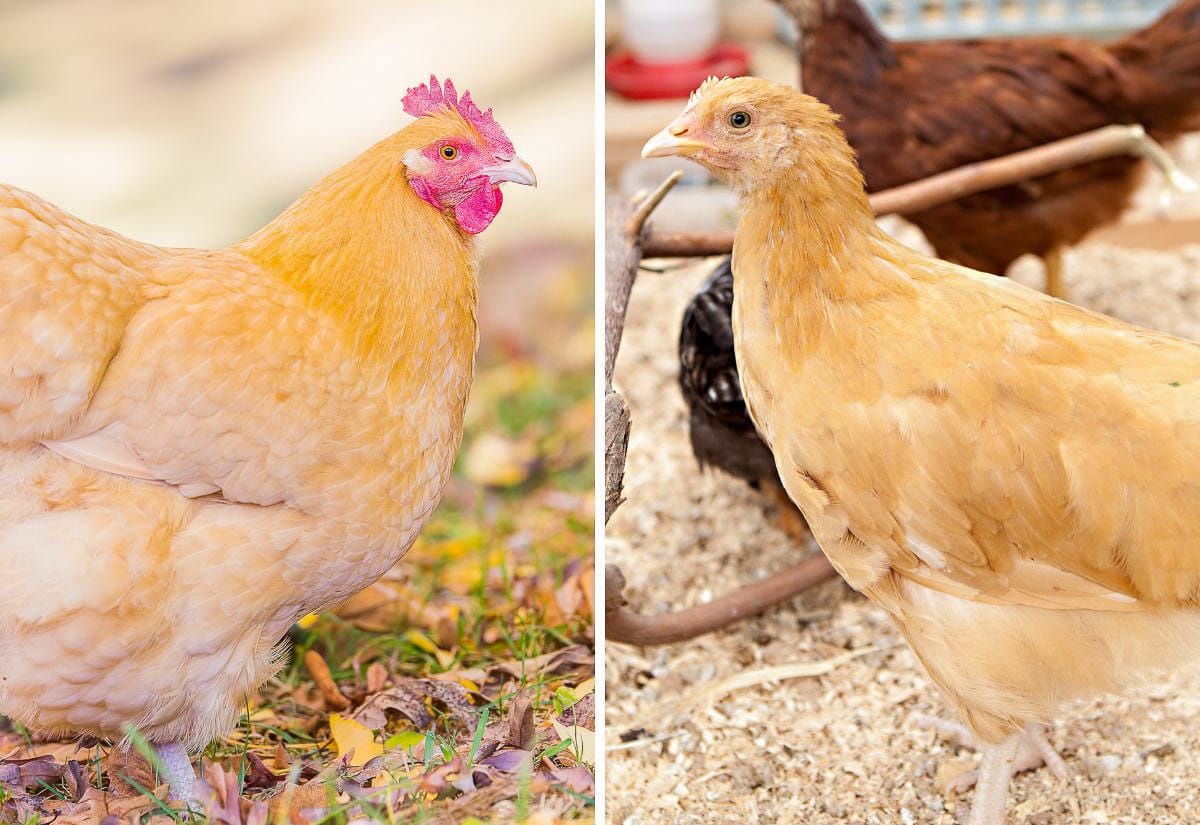
Why I Choose Started Pullets (and You Might Want To, Too)
Don’t get me wrong—I adore baby chicks. There’s nothing quite like watching them hatch or hearing their peeps from the brooder. But when it comes to adding to my own flock, I’ll take a pullet any day. Here’s why:
1. Faster Egg Production
Pullets start laying eggs around 18–22 weeks, depending on the breed. If you buy chicks in early spring, you may not see your first egg until late summer—or even next spring if the days start getting shorter before they reach maturity. That’s a long time to feed a freeloading flock.
2. No Brooder Required
Raising chicks takes equipment, time, and care. You’ll need a warm, draft-free brooder, daily cleanups, and heat adjustments for at least 5–6 weeks. If your weather is anything like ours here in Maine, it might be mid-summer before chicks are feathered out and safe to go outside.
3. Less Worry, More Convenience
Started pullets are hardy. You skip past their most vulnerable stage, and you won’t need to fuss over temperature, feather development, or brooder pecking order. For busy folks or anyone wanting an easier start, pullets are a practical solution.
Where to Buy Started Pullets
Finding healthy, well-raised started pullets can take a little effort, but it’s worth it. Here’s where to look:
Hatcheries
Some hatcheries offer started pullets shipped directly to your door. Check their age ranges, breed availability, and whether the birds are vaccinated. Watch those shipping fees—they can add up fast and sometimes cost more than the birds themselves.
Local Farms
Many small-scale breeders raise pullets for seasonal sales, often starting in late spring or early summer. Ask around at feed stores, local 4-H groups, or community Facebook pages. Buying local not only supports nearby farms, but also lets you see the birds and ask questions before bringing them home.
Farm Swaps + Classifieds
Look for listings on Craigslist, local homesteading forums, or chicken swap events in your area. These can be a great source for pullets, but be cautious—ask about how the birds were raised, what they’re fed, and look for clean coops and alert, healthy birds when you visit.
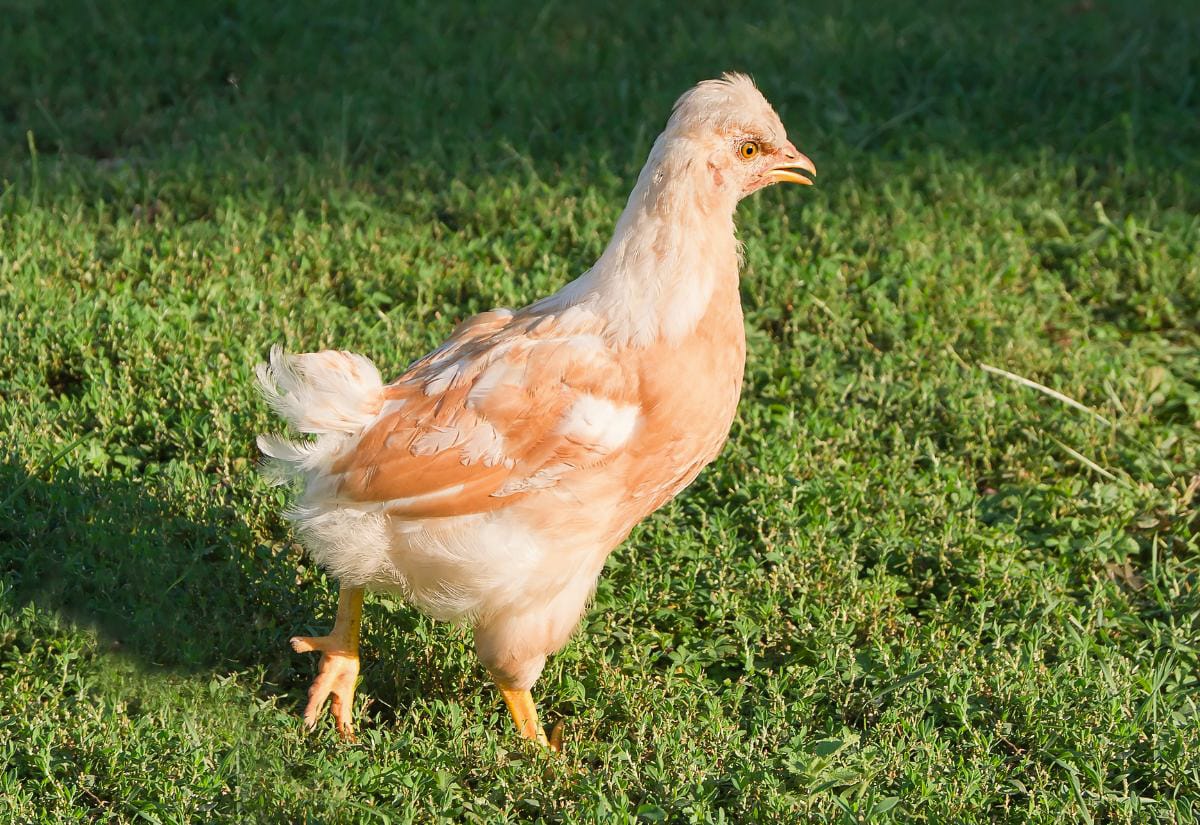
How to Choose a Healthy Started Pullet
Here are a few things I always check before buying:
- Age: A true pullet will have a small to medium comb and wattle. If they’re bright red and large, you might be buying an older hen.
- Feather Condition: Look for clean, full plumage. Bald patches or dirty feathers may indicate overcrowding or illness.
- Alertness: The bird should be active, curious, and responsive.
- Feet + Legs: Scaly legs or limping may suggest underlying health issues.
And don’t forget: Quarantine new birds for at least 30 days away from your existing flock. Even healthy-looking birds can carry parasites or illness.
How to Introduce Started Pullets to Your Flock
You can’t just plop new birds into your existing coop and hope for the best—chickens have a strict pecking order, and introductions need to be gradual. Tossing newcomers into the mix without planning can lead to stress, injury, or even death for the new birds. A slow, thoughtful introduction gives everyone a chance to adjust and keeps your flock healthier and happier.
After the quarantine period, move the pullets to a pen adjacent to your main coop where the two groups can see and hear each other, but not make physical contact. This “see but no touch” setup allows them to become familiar and reduces the shock of direct integration. I keep them in this side-by-side arrangement for 1–2 weeks, depending on how many pullets I’m introducing—larger groups usually integrate more smoothly.
When you’re ready to combine them, do it after dark. Chickens are calmer and less reactive at night, which helps lower the chance of immediate aggression. Simply place the pullets onto the roosts while the others are sleeping. Keep an eye on them the next morning and throughout the day. A little pecking is normal, but watch closely for excessive bullying, especially if you’re adding just a few birds who might be singled out.
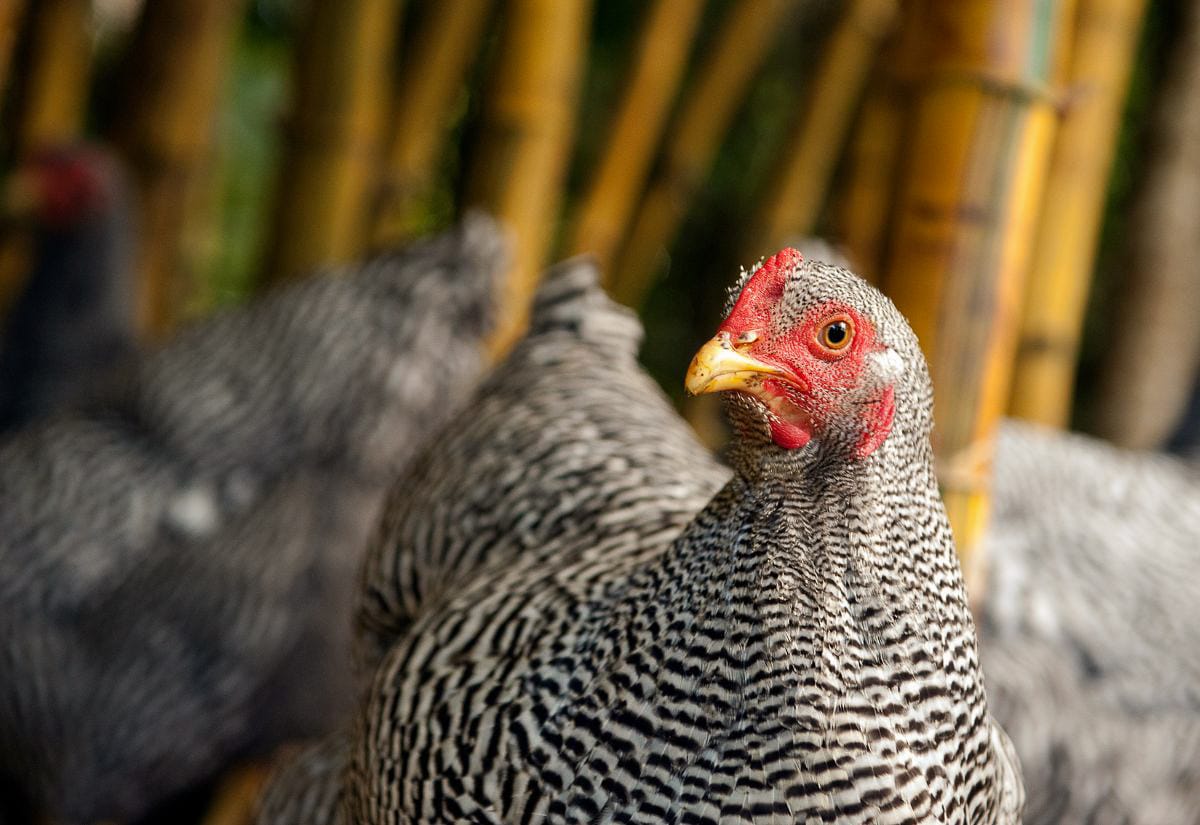
Pullets vs. Chicks: A Quick Comparison
| Feature | Started Pullets | Chicks |
|---|---|---|
| Time to Eggs | 4-8 weeks | 16-24 weeks |
| Brooder Needed | No | Yes (5-6 weeks) |
| Indoor Space Needed | None | Yes |
| Cost per Bird | $15-25 | $3-5 |
| Risk of Illness | Lower | Higher in brooder |
Started pullets cost more upfront, but they save time, effort, and resources in the long run.
A Few Drawbacks to Consider
Started pullets aren’t perfect for everyone. Here are a few things to keep in mind:
- Cost: Expect to pay 3–5x more than a chick.
- Availability: Pullets aren’t always easy to find. You may need to reserve in advance or travel farther to get them.
- Breed Accuracy: Some sellers label birds as purebred when they’re not. If breed matters to you, know what to look for.
- Health Risk: Private sellers might not disclose illness. Always quarantine and inspect before buying.
Common Questions About Started Pullets
Pin this post to save these tips for next season’s flock additions!
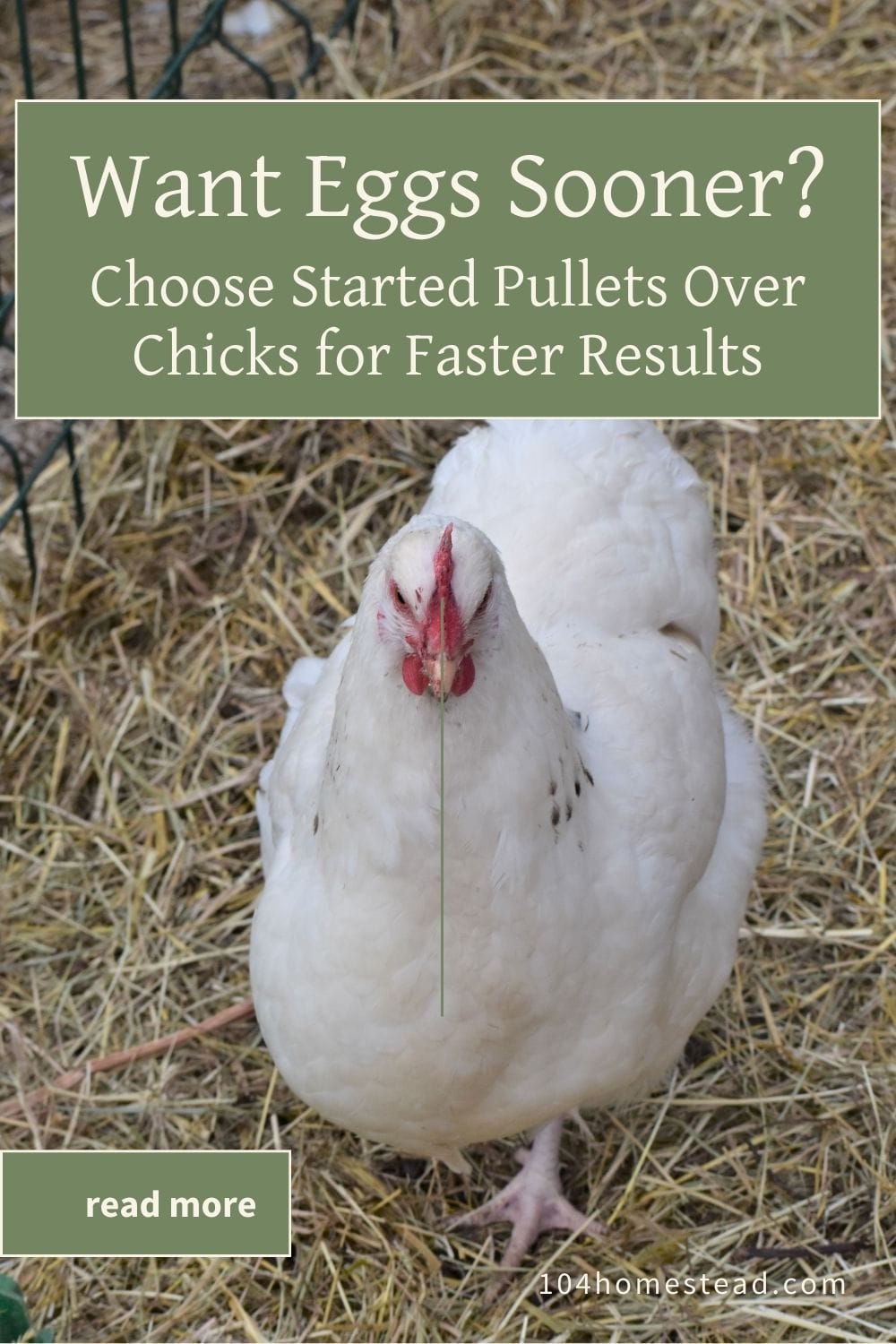
For me, started pullets strike the perfect balance—I get the joy of hatching chicks for others and the convenience of adding nearly-laying hens to my own flock. If you’re eager for eggs or want to skip the brooder stage, they’re absolutely worth considering.
Have you ever raised started pullets? Or do you prefer the chick-to-hen journey? Let me know your experience in the comments—I’d love to hear what works best on your homestead.





We added 2 pullets to our coup with two older chickens, not realizing we should have waited. They seem to have adjusted well, and are laying eggs regulrly after 6 weeks. We had to have a separate tray for their treats – the older hens chased them away. I just realized the 2 younger hens are not going into the coup at night but instead huddling on top together. They both go into the box to lay eggs, but not the attached area to roost.
The entire place is screened and protected, but I worry about the colder weather coming. I live in Florida so its not terribly cold, but still does get to the 40s at times.
Really good information! I am down to having only 1 out 5 of my original 8 year old girls and decided to get 5 pullets from a local breeder that hatched 7/29/19. They are in quarantine (in our spare bedroom lol) and I am planning on putting them in my coop in a week, separated from my Luna for 2 weeks now that i read your article. Our daytime temps have been in the 80’s and 90’s, nightime in the 60’s. They will have indoor space and a small outdoor place to interact with Luna on the other side of the wired fence.
My question is….do i need to have a heat lamp on at night if they are in the coop with one opening that will have incoming air? They seem to have most of their feathers.
Thanks, Julie
Hi Jessica, very soon l am going to start my flock. I have the coop, but need to build a run. I am only going to have 5 due to the size of my coop. I have decided to get pullets. My question to you is do I have to quarantine each one? Your article was very informative and helpful. Thank you!
If they are coming from the same source at the same time, then no, you don’t need to quarantine. If you are getting them from different places or spread out over time, yes, the need to be quarantined.
Interesting!
What do you do with your chickens after they retire from laying eggs? Do you eat them? 🙁 I realize that is what most people do but I cannot do that. I will just have pet chickens! I feel like I’m gonna end up with hundreds of chickens in the long run since I started with 7… We wanted to raise them to learn about chickens and for their eggs, so if none of my chicks lay eggs anymore, we’ll probably get more chicks. I do prefer the babies. They are irresistible, but I see the benefit in buying started pullets!
We have eaten them a few times if they are still fairly young, but most of the times they are sold, no questions asked. If a hen is sick, she is dispatched and buried in the yard.
I haven’t ever considered this approach. You make some very valid points, thank you for sharing at HBN! I think my kiddos would shoot me if we skipped the baby chick stage of raising chickens, but maybe when they get a bit older I could try this approach 😉 We don’t get to add to our flock this season, but am looking forward to next year when I get to triple it (and actually have enough eggs to share with friends and family.) I have noticed your pretty face popping up in my pinterest feed a lot lately 😉 Love your blog, and look forward to getting to know you better.
You just made my day 🙂 Thank you!